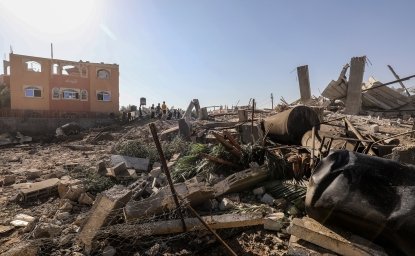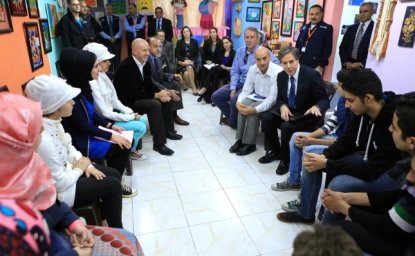Researchers Diane Singerman, Kareem Ibrahim, and Reem Abdel Haliem have been collaborating through TADAMUN, a Cairo-based initiative that works with citizens to claim their urban rights, conducting a spatial analysis of urban inequality to offer visual tools for understanding development gaps and policy challenges in contemporary Egypt.
The research reveals informal and impoverished residential areas woven within the core of urban Cairo. The unplanned settlements developed long before the city’s rapid expansion, creating nodes of poverty within the urban center. The national government’s response to urbanization has been the development of entirely new cities like the 6th of October and more recently the planned development of the New Capital City.
The 6th of October was planned to hold over 5 million people yet the city has suffered an 80% vacancy rate, according to Ibrahim. However, the glamour of Dubai has provoked mass planning and building by the Ministry of Urban Development in an effort to increase tourism and the overall wow-factor of Egypt. Plans for a million more housing units and a grand boulevard to the pyramids from Cairo disregard dense urban areas and simply erase poor communities from the urban landscape.
To make matters worse, labels like “informal”, “formal”, “planned”, or “unplanned” have distributed resources and investment unequally, leaving many of the urban poor invisible to the government. A community of 80,000 people labeled “informal” or “rural” may receive 20 schools from the national government, while an urban area of over 600,000 has only one school. In the case of housing, the Egyptian government has relocated impoverished families from informal areas to settlements over 40 miles from the city center. These settlements are considered “formal” but many lack schools, water, housing, and basic amenities.
The data collection process for Ibrahim and the research team was challenging. The budgets at the district and shiya (similar to neighborhood) level are not released publicly, and local surveys are scarce. Additionally, the budget cycle involves two ministers of finance, disconnecting investment with capacity. A school might be built, but there may be no teachers; pipes may be installed, but no water flows through them.
The absence of locally elected officials has muted residents’ concerns. Deprived communities have no mechanisms for communicating needs to a heavily centralized national government. The revolution in 2011 forced the Egyptian government to take notice, but the decentralization process is far from realization. Since the revolution, “the space for civil society is closing,” explained Ibrahim, referring to the difficulty that entities face working within Egypt in an increasingly turbulent political atmosphere.





